Input Small-Signal Characteristics of Selected DC–DC Switching Converters
Abstract
1. Introduction
2. Small-Signal Averaged Models of Buck and Boost Converters
3. Averaged Models of Flyback Converter
4. Small-Signal Input Characteristics for CCM
5. Small-Signal Input Characteristics for DCM
6. Calculations and Experimental Data
7. Conclusions
Author Contributions
Funding
Institutional Review Board Statement
Informed Consent Statement
Data Availability Statement
Conflicts of Interest
Appendix A
- Mixed Signal Oscilloscope (Tektronix MSO56)
- Arbitrary Waveform Generator (Tektronix AFG31022)
- Power Supply (Agilent 6674A/AMREL LPS-305)
- Electronic Load (Agilent 6060B)
- Current Probe (Tektronix TCP0030)
- High-voltage Differential Probe (Tektronix THDP0200) and additionally
- Automatic RCL Meter (Fluke PM6306)
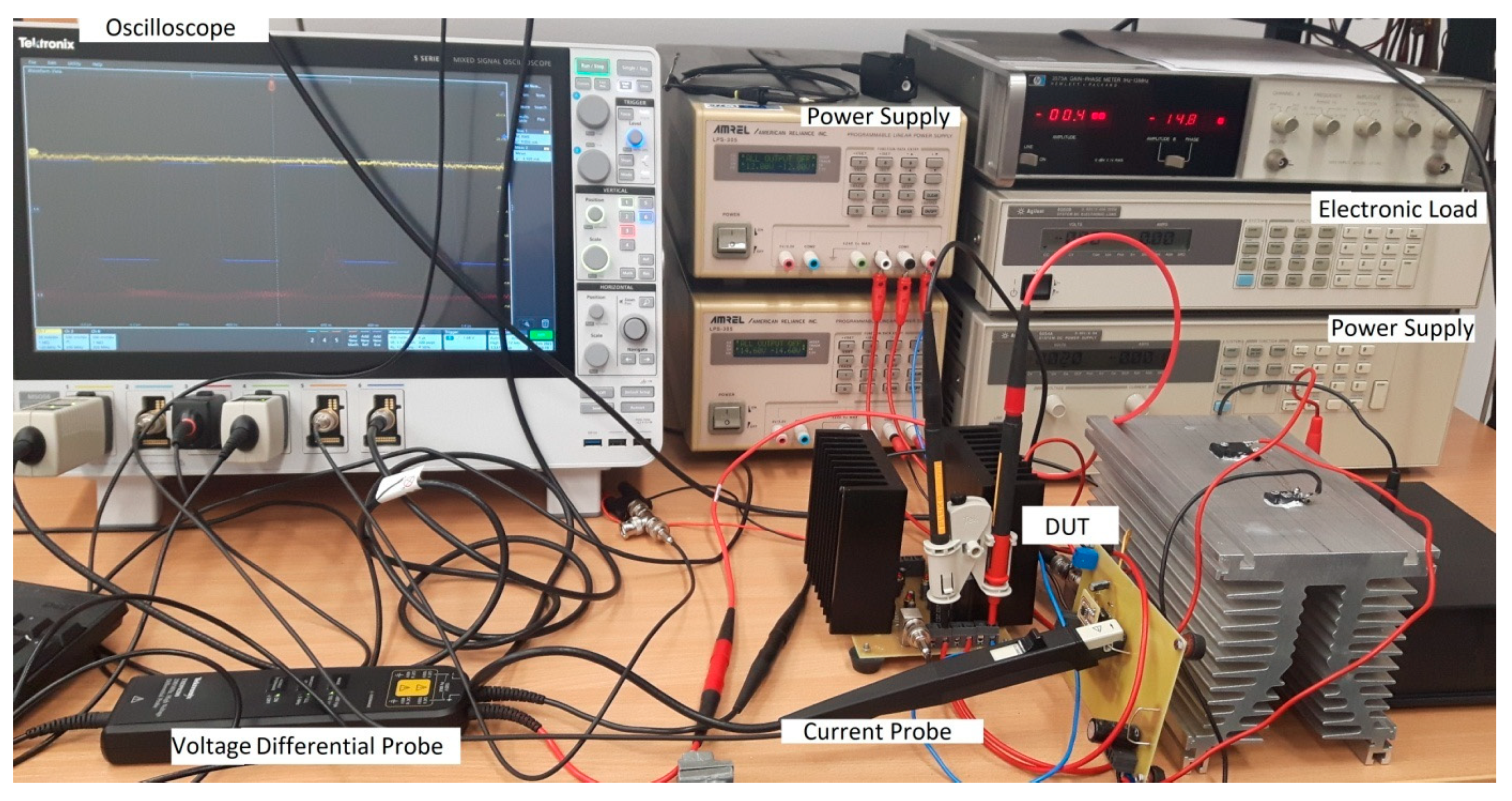
References
- Erickson, R.W.; Maksimovic, D. Fundamentals of Power Electronics, 2nd ed.; Kluwer: Bangkok, Thailand, 2002. [Google Scholar]
- Kazimierczuk, M.K. Pulse-Width Modulated DC–DC Power Converters; J. Wiley: Hoboken, NJ, USA, 2008. [Google Scholar]
- Hart, D.W. Power Electronics; McGraw-Hill: New York, NY, USA, 2011. [Google Scholar]
- Middlebrook, R.D.; Čuk, S. A general unified approach to modeling switching-converter power stages. In Proceedings of the IEEE Power Electronic Specialists Conference, Cleveland, OH, USA, 8–10 June 1976; pp. 18–34. [Google Scholar]
- Čuk, S.; Middlebrook, R.D. A general unified approach to modelling switching DC-DC converters in discontinuous conduction mode. In Proceedings of the Power Electronic Specialists Conference, Piscataway, NJ, USA, 14–16 June 1977; pp. 18–34. [Google Scholar]
- Middlebrook, R.D. Small-Signal Modeling of Pulse-Width Modulated Switched-Mode Power Conwerters. Proc. IEEE 1988, 76, 343–354. [Google Scholar] [CrossRef]
- Vorperian, V. Simplified analysis of PWM converters using model of PWM Switch. Continuous conduction mode. IEEE Trans. Aerosp. Electron. Syst. 1990, 26, 490–496. [Google Scholar] [CrossRef]
- Vorperian, V. Simplified analysis of PWM converters using model of PWM switch, II. Discontinuous conduction mode. IEEE Trans. Aerosp. Electron. Syst. 1990, 26, 497–505. [Google Scholar] [CrossRef]
- Maksimowic, D.; Stankovic, A.M.; Thottuvelil, V.J.; Verghese, G.C. Modeling and Simulation of Power Electronic Converters. Proc. IEEE 2011, 89, 898–912. [Google Scholar] [CrossRef]
- Janke, W. Averaged Models of Pulse-Modulated DC-DC Converters, Part I. Discussion of standard methods. Arch. Electr. Eng. 2012, 61, 609–631. [Google Scholar]
- Ochoa, D.; Lázaro, A.; Zumel, P.; Sanz, M.; Rodriguez de Frutos, J.; Barrado, A. Small-Signal Modeling of Phase-Shifted Full-Bridge Converter Considering the Delay Associated to the Leakage Inductance. Energies 2021, 14, 7280. [Google Scholar] [CrossRef]
- Rasheduzzaman, M.; Fajri, P.; Kimball, J.; Deken, B. Modeling, Analysis, and Control Design of a Single-Stage Boost Inverter. Energies 2021, 14, 4098. [Google Scholar] [CrossRef]
- De Gusseme, K.; Van de Sype, D.M.; Van den Bossche, A.P.M.; Melkebeek, J.A. Variable-Duty-Cycle Control to Achieve High Input Power Factor for DCM Boost PFC Converter. IEEE Trans. Ind. Electron. 2007, 54, 858–865. [Google Scholar] [CrossRef]
- Enrique, J.M.; Duran, E.; Sidrach-de-Cardona, M.; Andujar, J.M. Theoretical assessment of the maximum power point tracking efficiency of photovoltaic facilities with different converter topologies. Elsevier Ltd Sol. Energy 2007, 81, 31–38. [Google Scholar] [CrossRef]
- Li, Y.; Oruganti, R. A Low Cost High Efficiency Inverter for Photovoltaic AC Module Application. In Proceedings of the 2010 35th IEEE Photovoltaic Specialists Conference, Honolulu, HI, USA, 20–25 June 2010; pp. 2853–2858. [Google Scholar]
- Lim, S.F.; Khambadkone, A.M. A Simple Digital DCM Control Scheme for Boost PFC Operating in Both CCM and DCM. IEEE Trans. Ind. Electron. 2011, 47, 1802–1812. [Google Scholar] [CrossRef]
- Middlebrook, R.D. Input filter considerations in design and applications of switching regulators. In Proceedings of the IEEE–IAS Annual Meeting, Chicago, IL, USA, 11–14 October 1976; pp. 366–382. [Google Scholar]
- Kazimierczuk, M.K.; Cravens, R.; Reatti, A. Closed-loop input impedance of PWM buck-derived DC-DC converters. In Proceedings of the IEEE International Symposium on Circuits and Systems, London, UK, 30 May–2 June 1994; pp. 61–64. [Google Scholar]
- Kim, D.; Son, D.; Choi, B. Input Impedance Analysis of PWM DC-to-DC Converters. In Proceedings of the IEEE 21st APEC, Dallas, TX, USA, 19–23 March 2006; pp. 1339–1346. [Google Scholar]
- Ahmadi, R.; Paschedag, D.; Ferdowsi, M. Closed Loop Input and Output Impedances of DC-DC Switching Converters Operating in Voltage and Current Mode Control. In Proceedings of the 36th Annual Conference of IEEE Industrial Electronic Society, Glendale, AZ, USA, 7–10 November 2010; pp. 2311–2316. [Google Scholar]
- Pidaparthy, S.K.; Choi, B. Input Impedances of DC-DC Converters: Unified Analysis and Application Example. J. Power Electron. 2016, 16, 2045–2056. [Google Scholar] [CrossRef]
- Zhang, X. Impedance Control and Stability of DC-DC Converter Systems. Ph.D. Thesis, University of Sheffield, Sheffield, UK, 2016. [Google Scholar]
- Asadi, F.; Eguchi, K. On the Extraction of Input and Output Impedance of PWM DC-DC Converters. Balk. J. Electr. Comput. Eng. 2019, 7, 123–130. [Google Scholar] [CrossRef][Green Version]
- Janke, W. Averaged Models of Pulse-Modulated DC-DC Converters, Part II. Models Based on the Separation of Variables. Arch. Electr. Eng. 2012, 61, 633–654. [Google Scholar] [CrossRef]
- Janke, W. Equivalent circuits for averaged description of DC-DC switch-mode power converters based on separation of variables approach. Bull. Pol. Acad. Sci. 2013, 61, 711–723. [Google Scholar] [CrossRef][Green Version]
- Janke, W.; Walczak, M. Small-Signal Input Characteristics of Step-Down and Step-Up Converters in Various Conduction Modes. Bull. Pol. Acad. Sci. 2016, 64, 265–270. [Google Scholar] [CrossRef][Green Version]
- Sun, J.; Mitchell, D.; Greuel, M.; Krein, P.; Bass, R. Averaged modeling of PWM Converters Operating in Discontinuous Conduction Mode. IEEE Trans. Power Electron. 2001, 16, 482–492. [Google Scholar]
- Usman Iftikhar, M.; Lefranc, P.; Sadarnac, D.; Karimi, C. Theoretical and Experimental Investigation of Averaged Modeling of Non-ideal PWM DC-DC Converters Operating in DCM. In Proceedings of the IEEE Annual Power Electronics Specialists Conference, Rhodes, Greece, 15–19 June 2008. [Google Scholar]
- Janke, W.; Bączek, M.; Kraśniewski, J. The influence of parasitic effects on the selected features of switch-mode Flyback converter. Prz. Elektrotech. 2018, 94, 44–46. [Google Scholar]
- Janke, W.; Bączek, M.; Kraśniewski, J. Input characteristics of a non-ideal DC-DC flyback converter. Bull. Pol. Acad. Sci. 2019, 67, 841–849. [Google Scholar]
- Janke, W.; Bączek, M.; Kraśniewski, J. Large-signal input characteristics of selected DC–DC switching converters Part I. Continuous conduction mode. Arch. Electr. Eng. 2020, 69, 739–750. [Google Scholar]
- Janke, W.; Bączek, M.; Kraśniewski, J. Large-signal input characteristics of selected DC–DC switching converters, Part II. Discontinuous conduction mode. Arch. Electr. Eng. 2020, 69, 801–813. [Google Scholar]
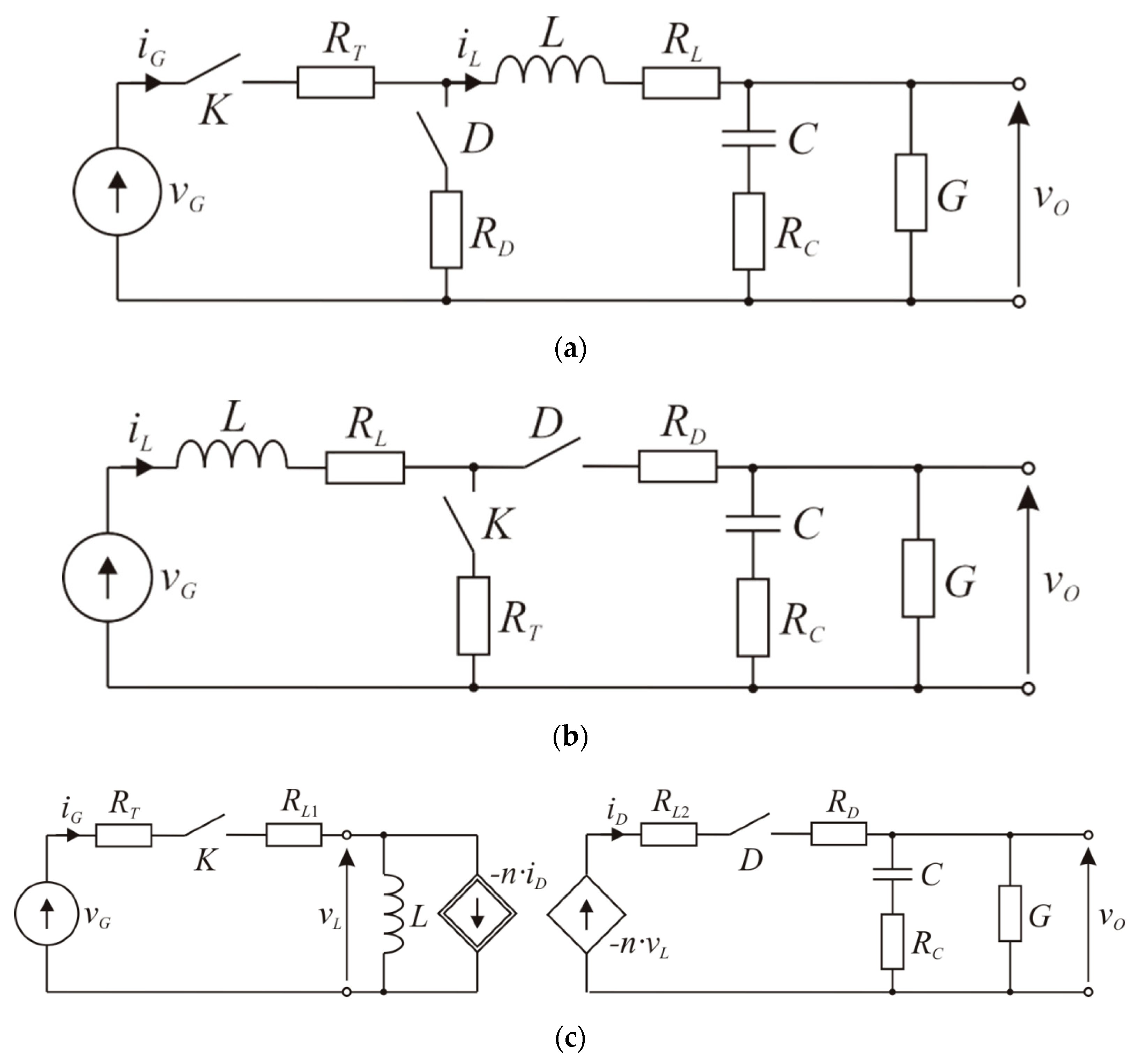
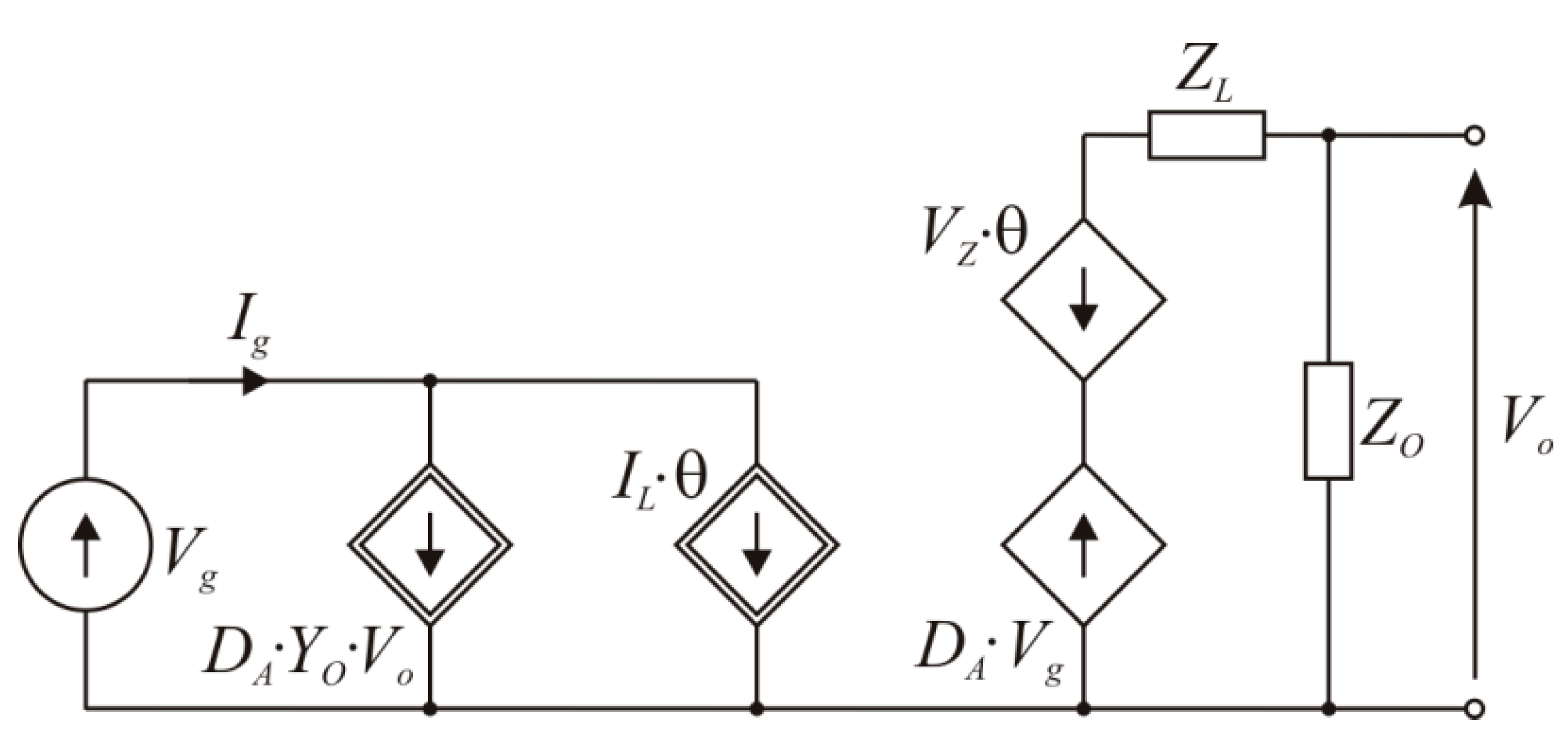





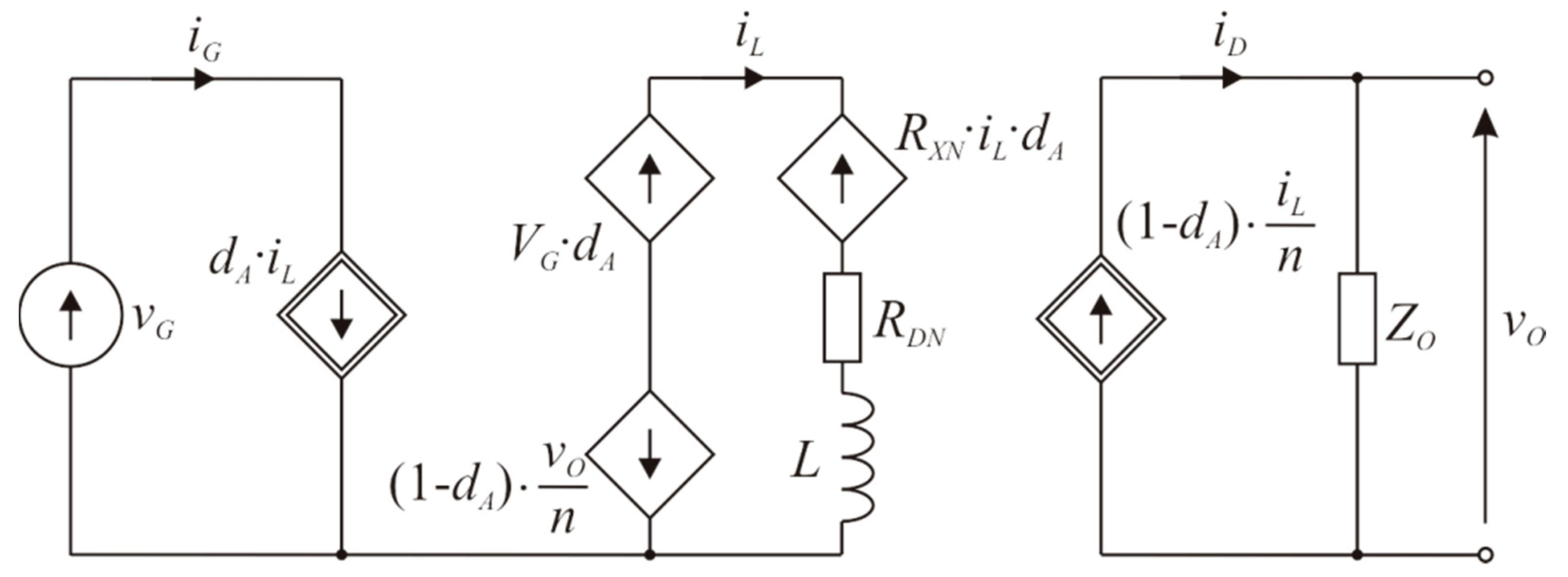
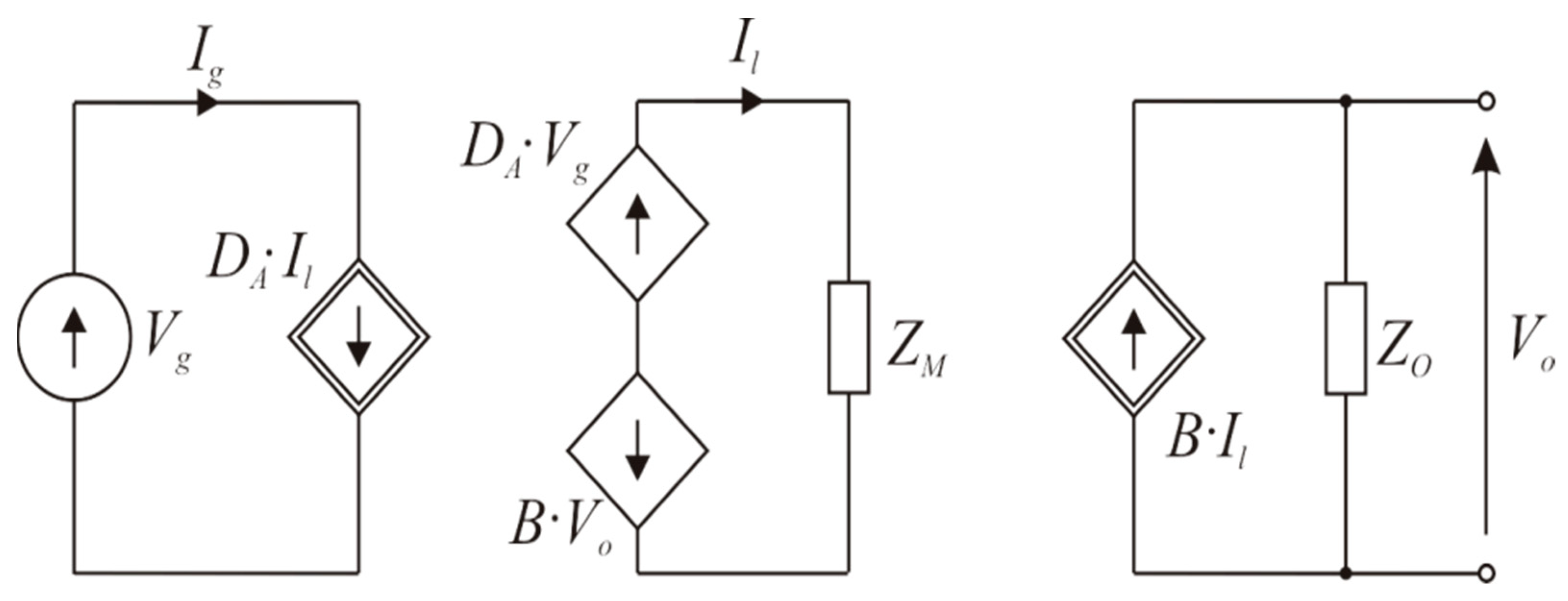
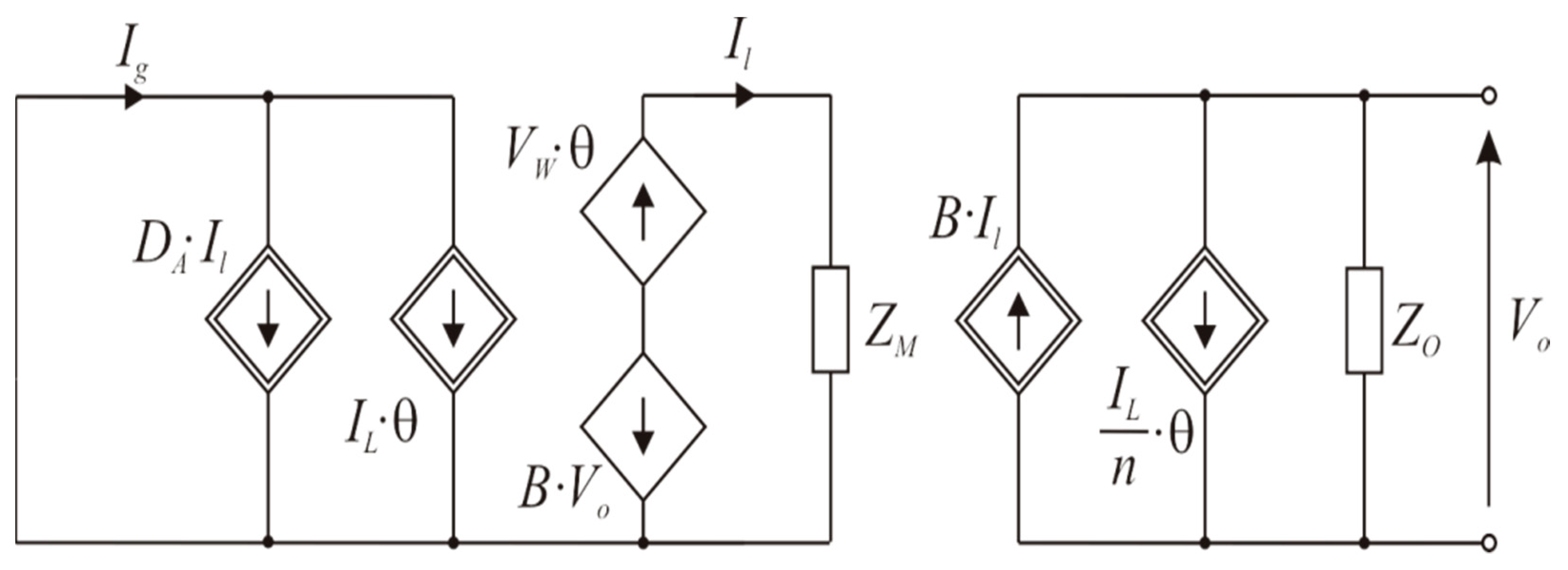
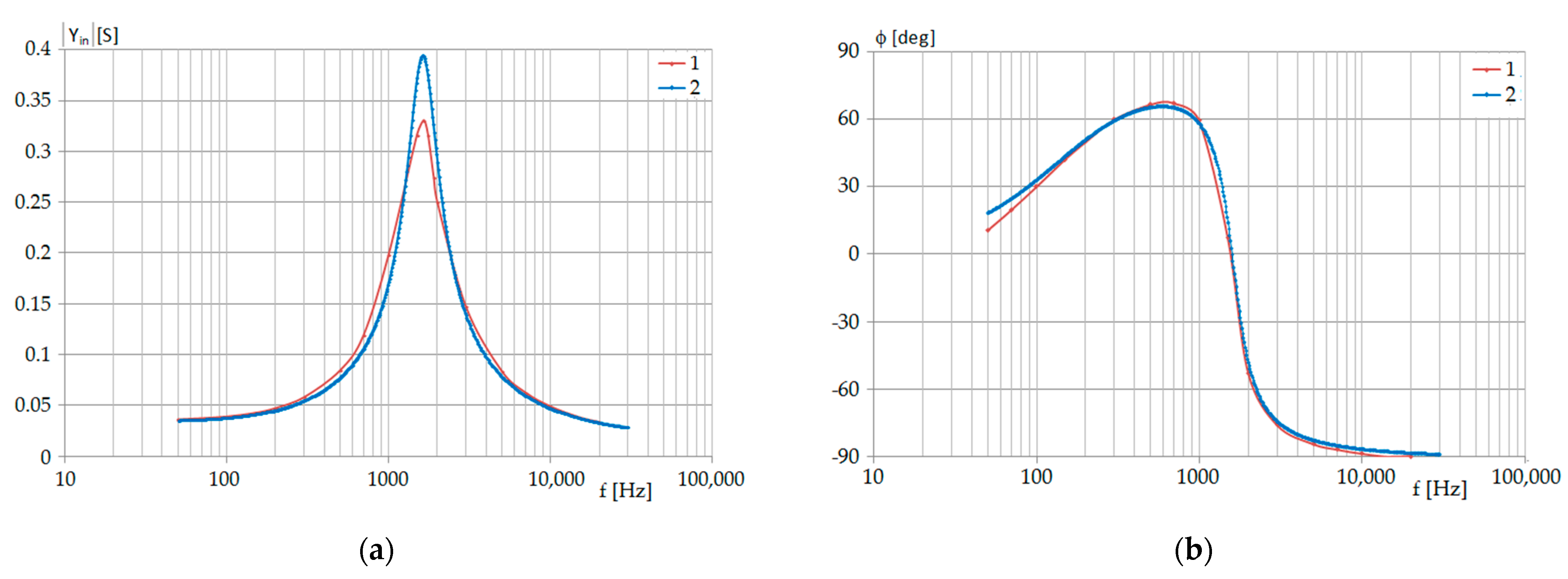

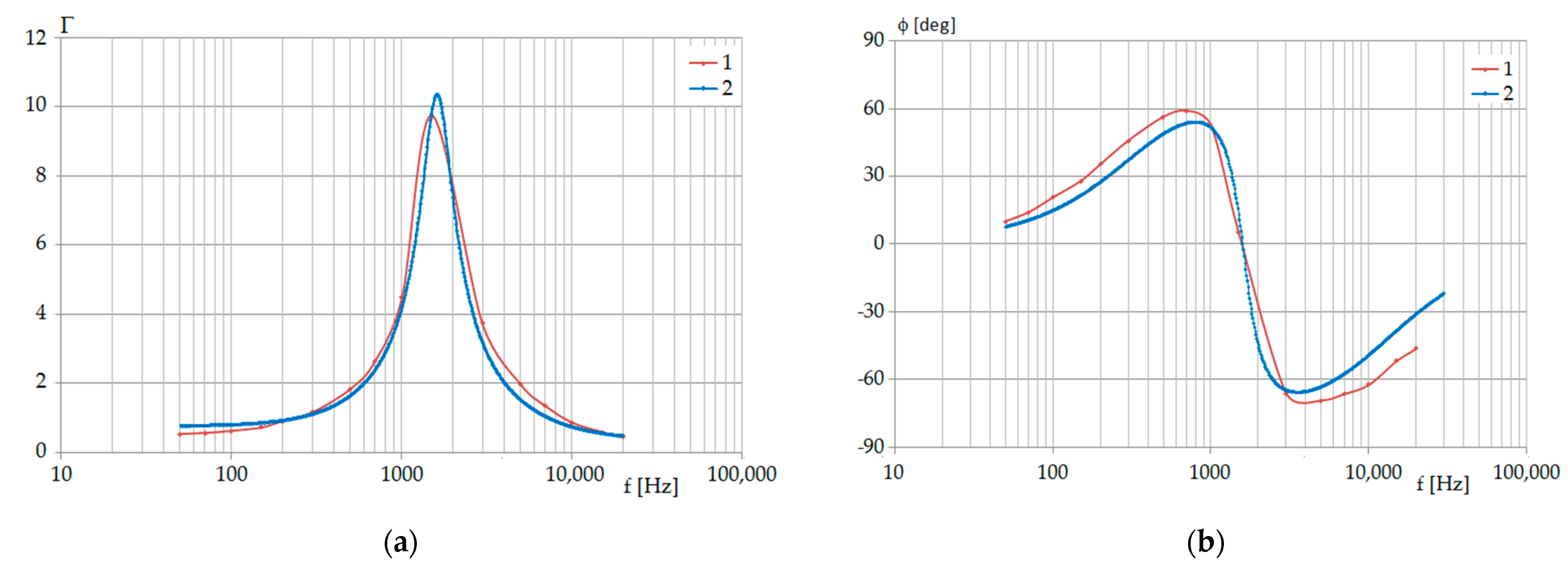

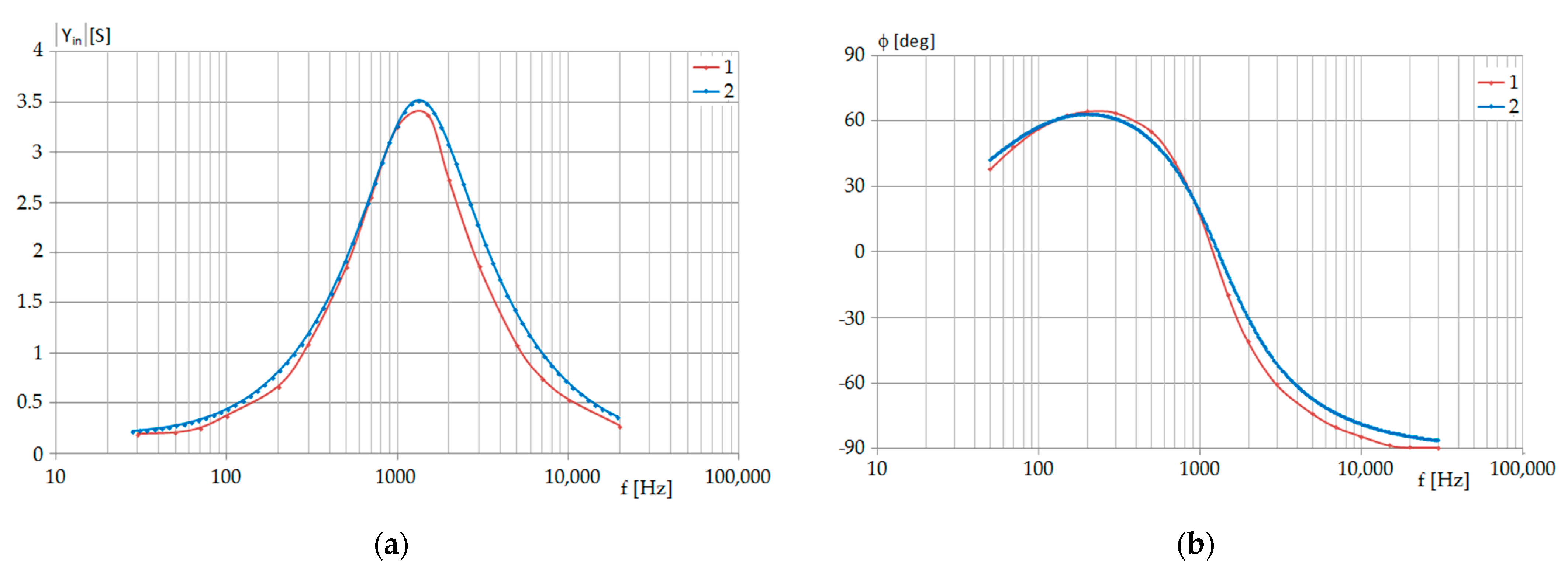





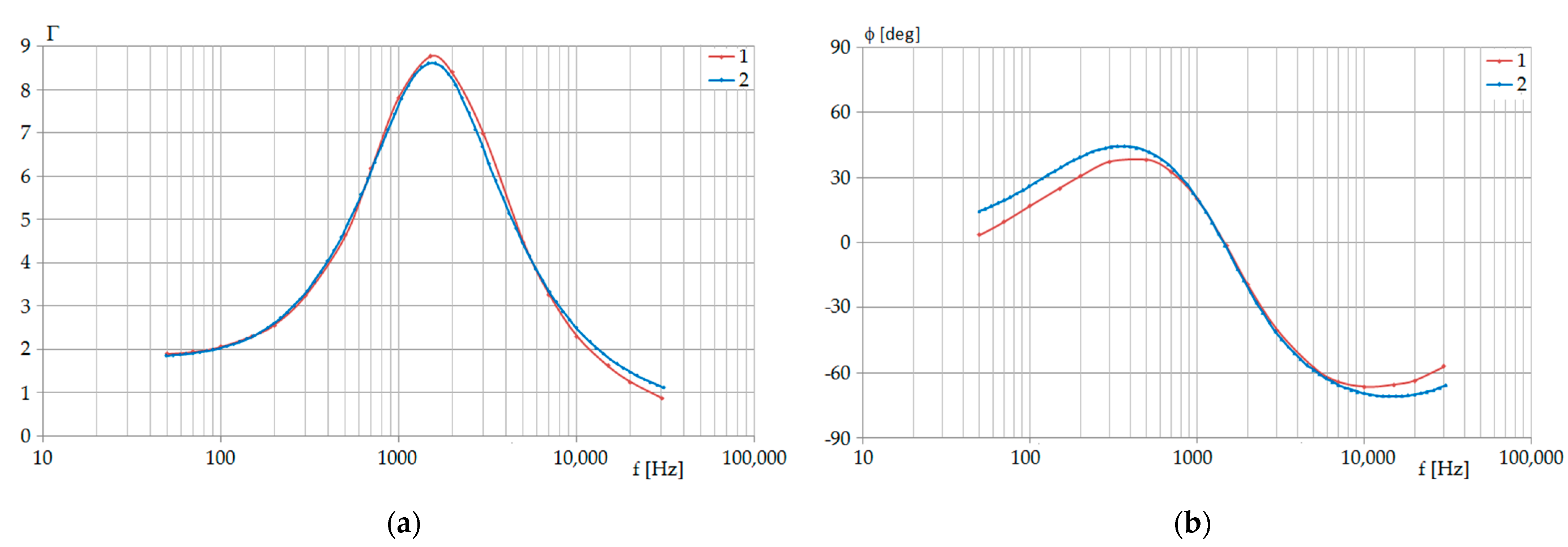
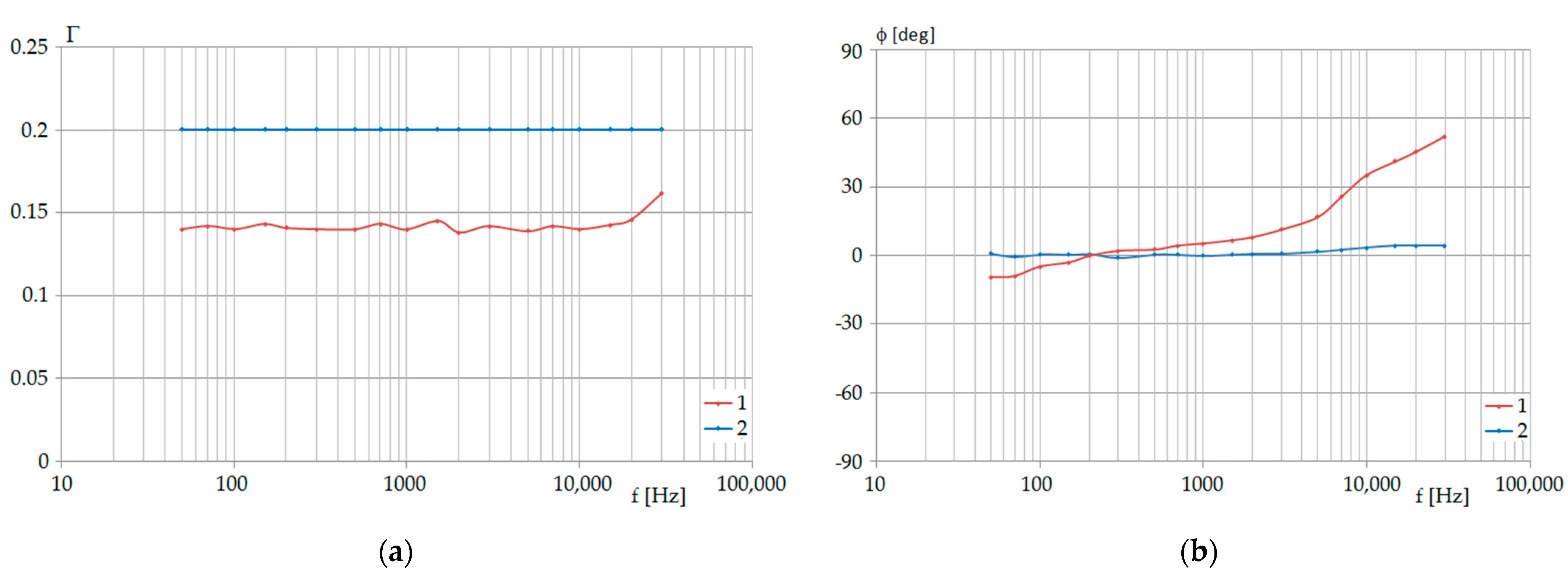
| Converter | Mode | VG [V] | Vgm[mV] | DA | θm | R [Ω] |
|---|---|---|---|---|---|---|
| BUCK | CCM | 10 | 50 | 0.4 | 0.01 | 10 |
| DCM | 10 | 50 | 0.3 | 0.01 | 198 | |
| BOOST | CCM | 5 | 50 | 0.3 | 0.01 | 10 |
| DCM | 5 | 50 | 0.3 | 0.01 | 198 | |
| FLYBACK | CCM | 20 | 200 | 0.5 | 0.01 | 3 |
| DCM | 20 | 200 | 0.3 | 0.01 | 50 |
Publisher’s Note: MDPI stays neutral with regard to jurisdictional claims in published maps and institutional affiliations. |
© 2022 by the authors. Licensee MDPI, Basel, Switzerland. This article is an open access article distributed under the terms and conditions of the Creative Commons Attribution (CC BY) license (https://creativecommons.org/licenses/by/4.0/).
Share and Cite
Janke, W.; Bączek, M.; Kraśniewski, J.; Walczak, M. Input Small-Signal Characteristics of Selected DC–DC Switching Converters. Energies 2022, 15, 1924. https://doi.org/10.3390/en15051924
Janke W, Bączek M, Kraśniewski J, Walczak M. Input Small-Signal Characteristics of Selected DC–DC Switching Converters. Energies. 2022; 15(5):1924. https://doi.org/10.3390/en15051924
Chicago/Turabian StyleJanke, Włodzimierz, Maciej Bączek, Jarosław Kraśniewski, and Marcin Walczak. 2022. "Input Small-Signal Characteristics of Selected DC–DC Switching Converters" Energies 15, no. 5: 1924. https://doi.org/10.3390/en15051924
APA StyleJanke, W., Bączek, M., Kraśniewski, J., & Walczak, M. (2022). Input Small-Signal Characteristics of Selected DC–DC Switching Converters. Energies, 15(5), 1924. https://doi.org/10.3390/en15051924






